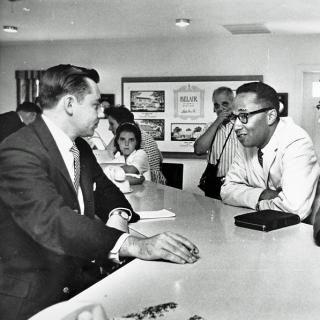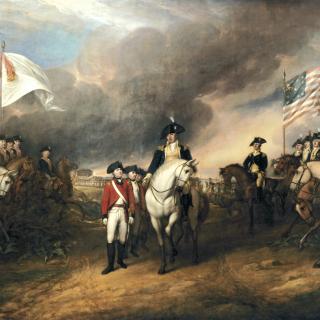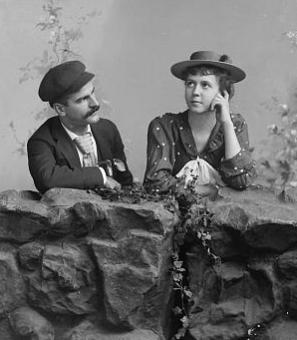Host to History: 1966 NCAA Final Four at Cole Field House
Nowadays the NCAA Men’s Basketball Final Four is played in huge football stadiums that can seat 50,000 or more fans. But that wasn’t always the case. Back in the day, the games took place in much smaller, on-campus arenas and the media coverage was paltry compared to what we see now. Such was the case in 1966, when the University of Maryland’s Cole Field House hosted college basketball’s final weekend.
The event was a tough ticket, with some enterprising Maryland students selling ticket books with admission to all the games for as much as (!) $50.[1] For hard core basketball fans, that was a good deal since the Final Four was not carried on a major television network, though the championship game was shown locally on WMAL-TV, Channel 7. Not quite the March Madness multimedia blitz that we are used to seeing today.
(A quick aside: The tournament didn’t have a catchy monkiker back then. In fact, the phrase “March Madness” wouldn’t come into the popular lexicon until the 1980s, when CBS Sports and the NCAA started using it, much to the chagrin of the Illinois High School Association.)
The 1966 championship game matchup was intriguing. On one side were the University of Kentucky Wildcats, coached by legendary Adolph Rupp, rich with basketball tradition – a true college basketball blueblood. On the other were the Texas Western College Miners, a relatively unknown team from El Paso with a young upstart coach named Don Haskins, and a campus better known for its remote location than the trophies in its trophy case.
Most sportswriters predicted that Kentucky would win. (The Washington Post even suggested that the game would be anti-climatic in comparison to Kentucky's semifinal matchup against Duke, since many saw them as the two best teams in college basketball.)[2] The Wildcats, after all, held a #1 ranking and boasted a high scoring, fast breaking, offense. Texas Western was a bigger team with a much more methodical style of play.
But the differing styles and traditions of the two teams were not the most significant contrasts on display. Something else separated the two schools even more.
Race.
Kentucky’s squad (like many teams from the South during that era) was entirely white. Seven out of twelve Texas Western players – including all five starters – were black. It was the first time a team had started five African American players in a championship game. In fact, Texas Western had become the first team to start five blacks in any game, when Coach Haskins began doing so earlier in the season.
For the times, that fact was significant. As Frank Fitzpatrick wrote in a retrospective article for ESPN, “In 1966, American cultural and sporting mythology insisted at least one white starter was necessary for success. Black athletes, prevailing wisdom implied, needed the steadying hand of a white teammate. Otherwise, games would dissolve into chaos.”[3] Divergence from this recipe often garnered a stiff response from fans and university officials.
The 1966 championship game at Cole would go a long way toward changing this conventional “wisdom.” As some in the nearly all white crowd waved confederate flags and the Kentucky band played Dixie, Texas Western shut down the Wildcats’ highly touted offense. The Miners held Kentucky to 38% shooting and won the game 72-65.
For African Americans, Texas Western’s championship was followed with dual joy and uncertainty—a recognition that a significant achievement had been made but the fear that the white response would undermine it. Perry Wallace, who became the first black scholarship athlete in the Southeastern Conference the following year, put it this way: “Texas Western broke open the old safe rules that teams had always worked under, these self imposed restrictions about how many blacks you could have on your team…. After the game, we all knew something had happened. It was clearly a watershed. But, while we were all so excited, we were still a little unsure of what it meant. What was going to happen? Would they [whites] let it continue?”[4]
As it turned out, yes. The game demonstrated to white coaches and administrators that they could not continue to exclude talented black players and expect to win. Sport Illustrated’s Frank Deford had prophesized as much in 1965: “The pressure on those that are holding out for sporting segregation is likely to become irresistible as soon as they are regularly whupped by their integrated neighbors.”[5]
The next year every conference in the South was integrated, including Kentucky’s own SEC and the number of black athletes increased dramatically in subsequent years.[6] (Kentucky’s basketball team would remain all white until 1970 as Adolph Rupp was notoriously slow to embrace integration.) By 1976, ten years after Texas Western’s championship season, over half of the basketball players in the SEC were African American.[7]
It’s probably short sighted to say that one game did all that – obviously there were larger forces at work during the Civil Rights movement. However, that March evening at Cole Field House played a significant role in the transformation of college athletics. Former NBA player and coach Pat Riley, who played on the 1966 Kentucky team, even called the game "The Emancipation Proclamation of College Basketball."
For more on the game and its impacts on the Civil Rights movement, check out this wonderful video some local students put together for the Maryland State History Day competition. And, be sure to watch (or re-watch!) the Hollywood film, Glory Road.
Footnotes
- ^ Minot, George, “Kentucky Pick Over Duke Tonight. Utah, Texas Western Clash in the Other Semifinal Here,” Washington Post, 18 Mar 1966: C1.
- ^ Minot, C1.
- ^ Frank Fitzpatrick, “Texas Western’s 1966 title left lasting legacy,” Special to ESPN Classic. 19 Nov 2003. Accessed 19 March 2014.
- ^ Fitzpatrick, Frank. And the Walls Came Tumbling Down: Kentucky, Texas Western and the Game that Changed American Sports. New York: Simon & Schuster, 1999. 22.
- ^ Deford, Frank. “The Negro Athlete is Invited Home,” Sports Illustrated, 14 Jun 1965, 26.
- ^ Fitzpatrick, Frank. And the Walls Came Tumbling Down: Kentucky, Texas Western and the Game that Changed American Sports. New York: Simon & Schuster, 1999. 28.
- ^ Joan Paul, Richard V. McGhee and Helen Fant, “The Arrival and Ascendence of Black Athletes in the Southeastern Conference, 1966-1980,” Phylon 45 (1984): 289.





![Sketch of the mythical fuan by Pearson Scott Foresman. [Source: Wikipedia]](/sites/default/files/styles/crop_320x320/public/2023-10/Goatman_Wikipedia_Faun_2_%28PSF%29.png?h=64a074ff&itok=C9Qh-PE1)












